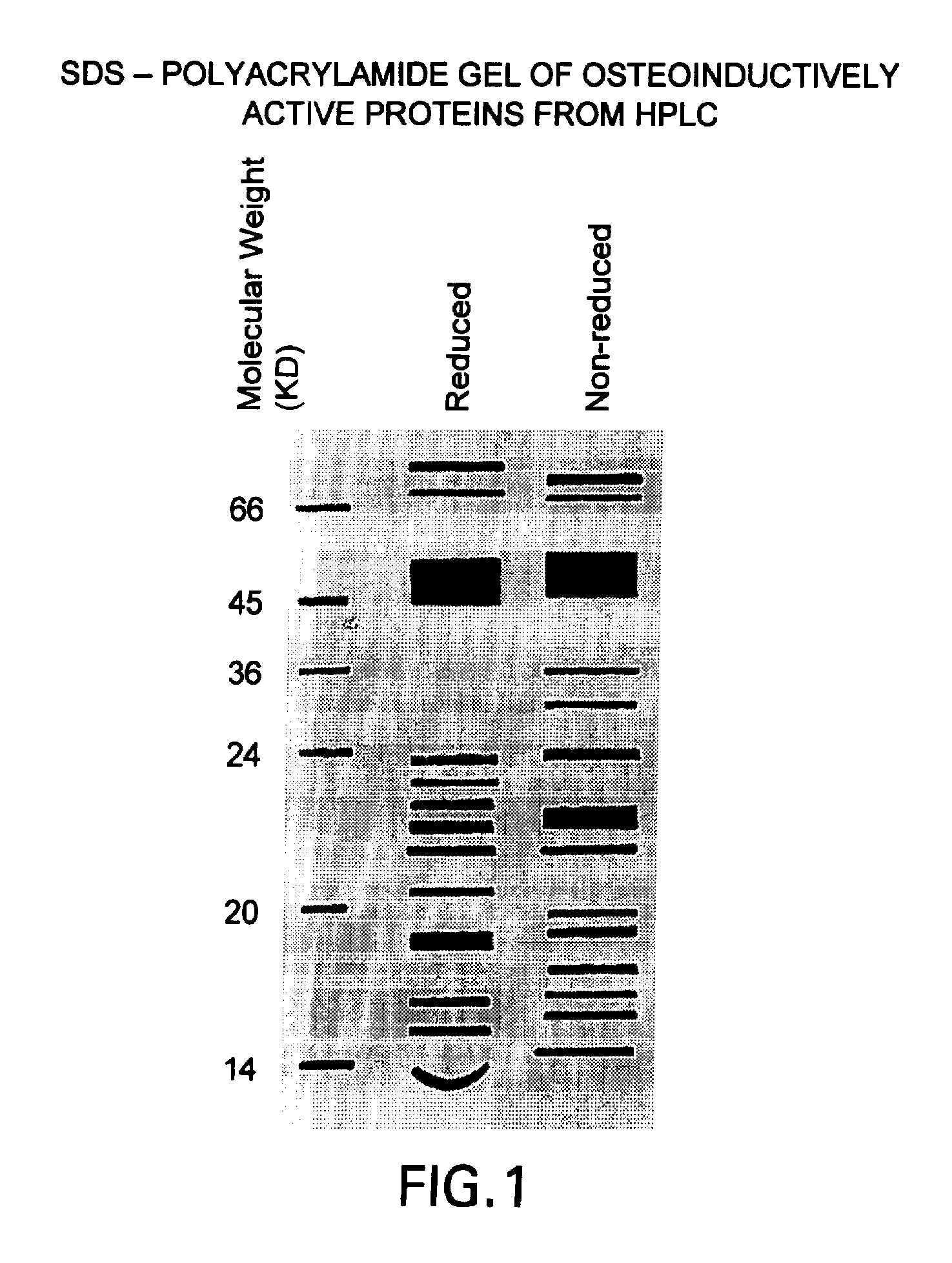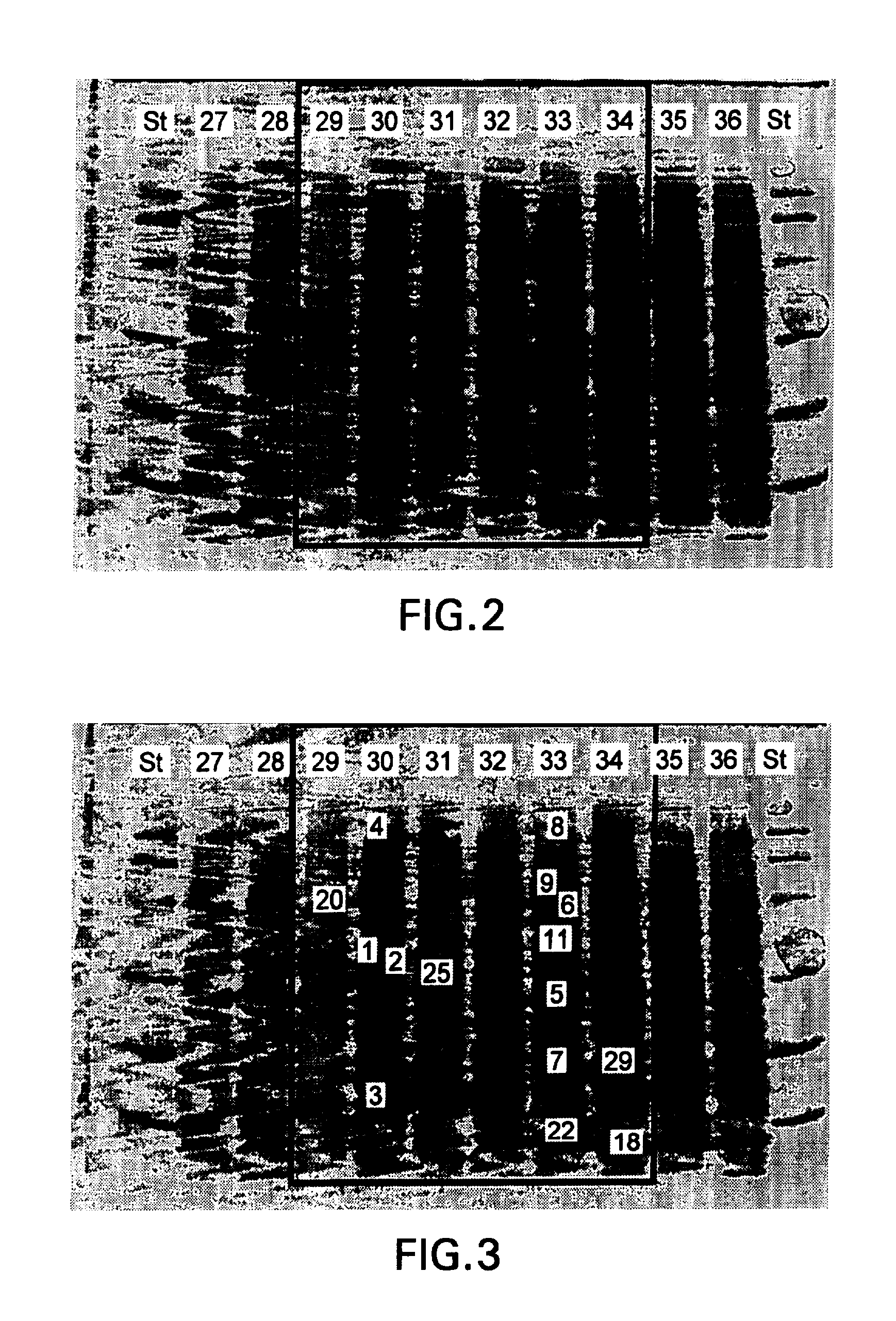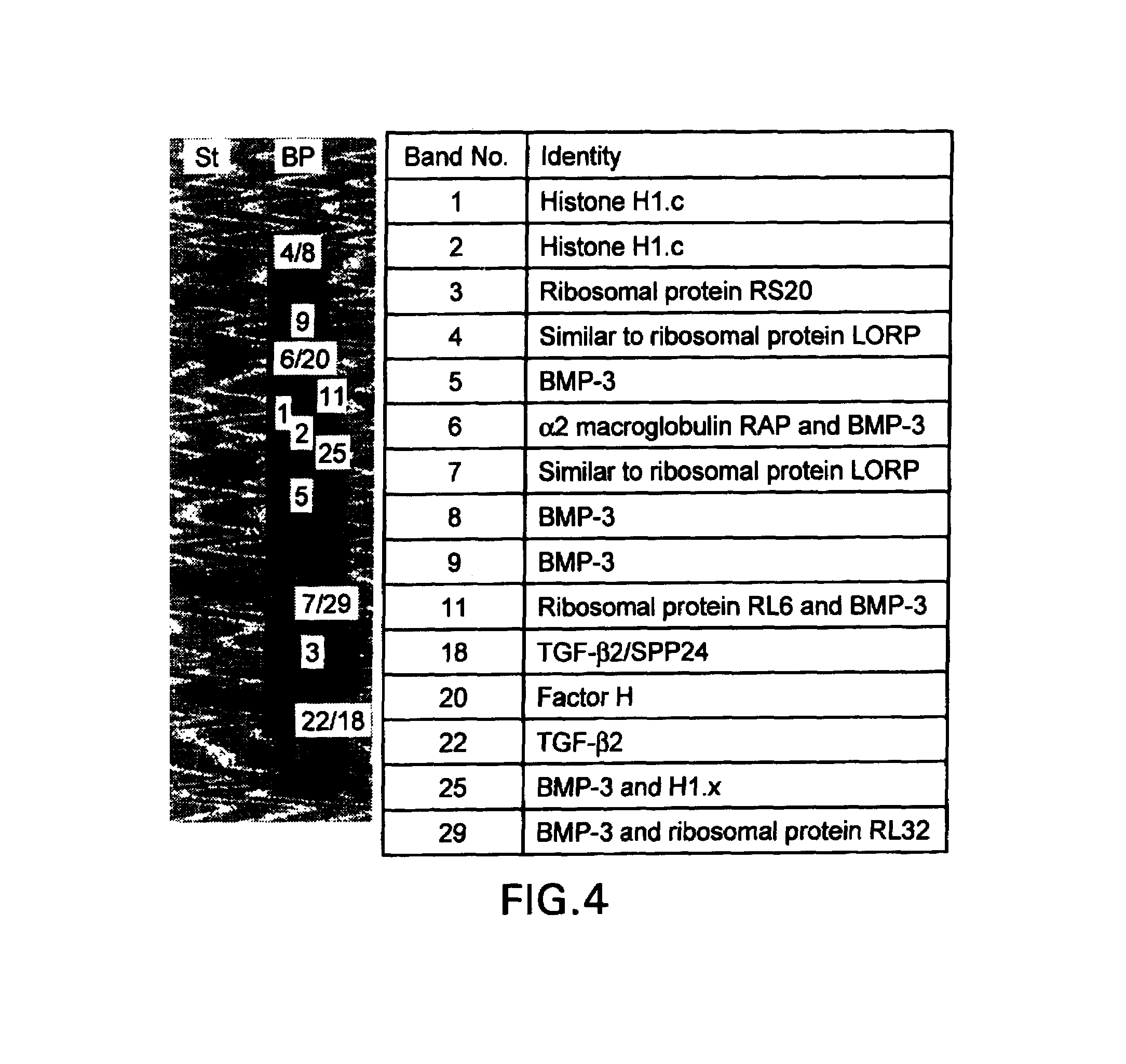Method of promoting natural bypass
a natural bypass and angiogenic factor technology, applied in the field of new angiogenic factor, can solve the problems of reducing blood flow, reducing the ability of the vessel wall to expand and contract, affecting etc., and achieves the effects of stimulating the growth of new blood vessels, facilitating manufacturing, and easy administration by the surgeon
- Summary
- Abstract
- Description
- Claims
- Application Information
AI Technical Summary
Benefits of technology
Problems solved by technology
Method used
Image
Examples
example 1
[0070]Quail chorioallantoic membrane (CAM) was in the manner described in “A Novel Assay of Angiogenesis in the Quail Chorioallantoic Membrane: Stimulation by bFGF and Inhibition by Angiostatin According to Fractal Dimension and Grid Intersection,” Parsons-Wingerter P., Dwai B., Yang M C., Elliot K E., Milaninia A., Redlitz A., Clark J. and Sage E. H. Fertilized Japanese quail eggs (Coturnix coturnix japonica) were opened onto Petri dishes on day 3 post-incubation (FIG. 20A). After 4 days of culture, a BDAP mixture, diluted in PBS / ovalubumin prewarmed to 37° C., was distributed evenly onto the surface of the CAM. After 24 hours of incubation, the CAM's were fixed, dissected and photographed (FIG. 20B) at 10× magnification to visualize the arterial vascular tree, including endstage vessels. Digital images of triplicate CAM specimens were acquired at 10× magnification in grayscale, binarized to black-and-white, and skeletonized (FIG. 20C). The vessel branching pattern was analyzed and...
example 2
Canine Myocardial Angiogenesis Pilot Study
[0074]Four adult mongrel dogs of either sex, weighing 21–26 kg, were anesthetized and a left thoracotomy performed through the fifth intercostal space. All visible epicardial collaterals connecting LAD diagonals to circumflex or right coronary arteries were ligated to minimize collateral flow to the LAD territory and an ameroid constrictor was placed on the proximal to the first diagonal branch. After completing the procedure, 0, 10 or 100 μg BDAP was injected in a 0.1 cc volume of povidone (polyvinylpyrrolidone), as polymer microspheres suspended in povidone, or in collagen gel for a total of nine injections. Each series of injections was administered in the ischemic LAD region of the left ventricle, as well as in a non-ischemic LCX region. The chest was closed and the animal was allowed to recover.
[0075]In order to provide an index of cellular proliferation at multiple time points after the initial surgery, bromodeoxyuridine (BrdU, 25 mg / k...
example 3
Large Scale Canine Myocardial Ischemia Study
[0077]The purpose of this study was to determine the effects of intramyocardial injections of Sulzer's Growth Factor mixture (GFm, also called ProVascTM) in a canine model of chronic myocardial ischemia. 38 dogs underwent ameroid constrictor placement on the proximal LAD and ligation of visible epicardial vessels collateralizing the LAD territory. Three weeks later, during a second surgery, animals had intramyocardial injections of either placebo, GFm at a concentration of 1 mg / ml or GFm at a concentration of 10 mg / ml. Each injection consisted of 0.15 ml, injections were at a spatial density of˜1 / cm2 over the LAD region. Group assignments were random and investigators were blinded to group assignment until after the analysis of all test results. Animal survived for an additional 6 weeks. Assessments of regional blood flow (by color microspheres), angiography and echocardiography (rest and stress) were performed prior to and after treatment...
PUM
| Property | Measurement | Unit |
|---|---|---|
| thick | aaaaa | aaaaa |
| pH | aaaaa | aaaaa |
| pH | aaaaa | aaaaa |
Abstract
Description
Claims
Application Information
 Login to View More
Login to View More - R&D
- Intellectual Property
- Life Sciences
- Materials
- Tech Scout
- Unparalleled Data Quality
- Higher Quality Content
- 60% Fewer Hallucinations
Browse by: Latest US Patents, China's latest patents, Technical Efficacy Thesaurus, Application Domain, Technology Topic, Popular Technical Reports.
© 2025 PatSnap. All rights reserved.Legal|Privacy policy|Modern Slavery Act Transparency Statement|Sitemap|About US| Contact US: help@patsnap.com



